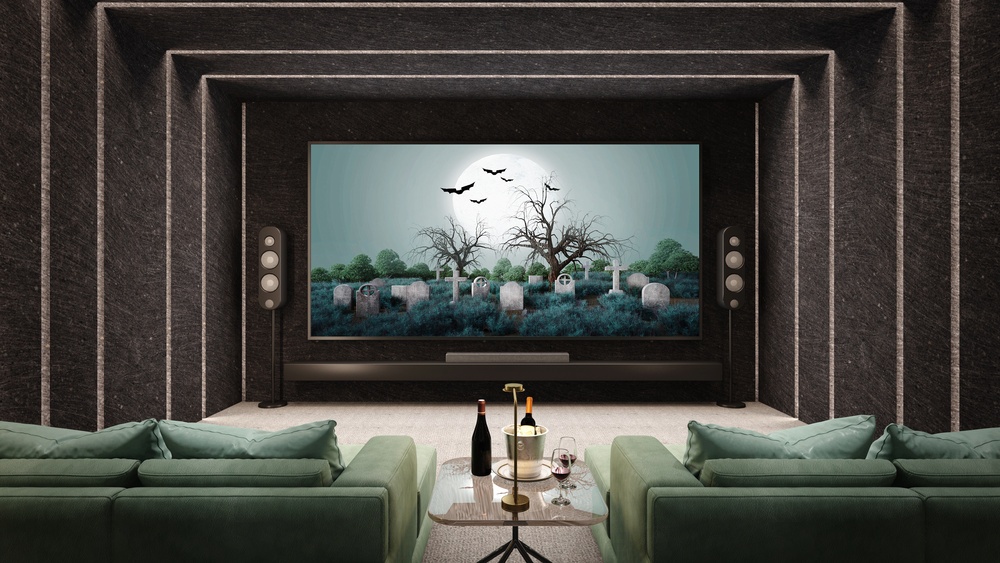Nothing is better than getting together with friends and family in your home to watch a great movie. While many build home theatres to watch sports or play video games, that doesn't mean they can't be used for other types of entertainment.
Whether entertaining guests or watching movies with your loved ones, you want an excellent experience every time. Here are simple steps to help you build the perfect home theatre.
1. Get A Home Theatre System
A home theatre system is the most critical part of a home theatre. It's what will make or break your movie-watching experience. If you have a terrible sound system, it won't matter how big your TV is or how high-quality your projector is—you won't be able to enjoy watching movies in your home as much as you could with a good sound system.
A good sound system will make all the difference between having a good home theatre and having an amazing one. The right speakers combined with amplifiers, receivers, subwoofers (for bass), and more will help create clear and balanced audio that feels natural when playing movies or video games in surround sound mode.
When deciding which home theatre system to buy at CablePro and similar shopping sites, you must consider your budget and the room in which you place the system to ensure that it fits the space.
2. Add Soundproofing Materials
You'll want to incorporate soundproofing materials into your wall design. You can do this by adding layers of foam or other insulating materials. The best way to ensure that your walls are truly soundproof is by making them as thick and heavy as possible.
However, you may need to compromise to maintain a certain aesthetic. The material used for the walls should also be carefully selected and installed correctly. Otherwise, what was meant to be a quiet room will end up acting more like an echo chamber.
3. Choose Your Screen
Choose a screen that is large enough to fill your room. The screen size should be based on the size of the space it will occupy, but remember that a larger screen will make any given object appear smaller and vice versa. This can impact how much space you have to fill with seats and furniture.
A matte white surface material is best for visibility, but many other options are also available. For example, if you want your theatre to be more decorative than practical, consider choosing a high-gloss material like velvet or silk fabric instead of traditional canvas or woodgrain plastic sheets.
It's important that whatever material you choose doesn't fade over time because watching movies while sitting through bright colours like yellow or red may not be so pleasant once they begin fading away after years of use.

4. Select A Film Projector
When selecting your projector, you must be aware of some critical features. The first is resolution, which is the number of pixels a projector can display. It is measured in pixels per inch (PPI), which dictates how large you can make your image onscreen before it becomes pixelated. The higher the PPI, the better-quality picture your projector will produce.
When choosing a projector mount, look at brightness levels, contrast ratio, and dynamic range capabilities. Projectors with high-end specifications will have better black levels and contrast ratios than budget models, but they also often cost more money.
5. Pick Comfortable Seating
Seating is a crucial factor when shopping for your home theatre. You want to ensure you have plenty of comfortable chairs and couches for friends and family to enjoy a movie or video game. If you don't have enough room, consider removing some furniture pieces to have seating that can accommodate more people comfortably.
When shopping for seating, make sure that you choose comfortable pieces that can hold up to the weight of whoever is sitting in them. Pick out chairs with a backrest to make the whole experience enjoyable and comfortable for you and your guests.
6. Have Proper Lighting
Lighting is easily overlooked, but it's essential to get it right. If you don't have enough light, your eyes can become strained and uncomfortable when watching a movie or television show as they struggle to adjust to the darkness while trying hard not to miss any of what's happening onscreen.
For added comfort during movie nights, consider using dimmable bulbs throughout your home theatre area and having a soft colour palette so that it doesn't get bright when someone enters an intense scene.
Publisher Website: https://cablepro.net.au/